TL;DR
Hike through various ecosystems as you go from the desert floor to 8000ft up in this knee busting 28 mile backcountry loop through the eastern district of Saguaro National Park. Check with the park rangers before starting as water sources aren’t always running. The only all-year water source is at Manning Camp. Temperatures can be hot at lower elevations and cooler at the higher elevations. We started this hike from the Douglas Springs trailhead and ended at Tanque Verde Ridge trailhead. We arranged a drop-off and pick-up for this hike. Be cautious of the various snakes in the area as well as gila monsters, bears, Africanized killer bees, and mountain lions. Campgrounds have bear boxes so you don’t have to worry about bear cans or hanging.
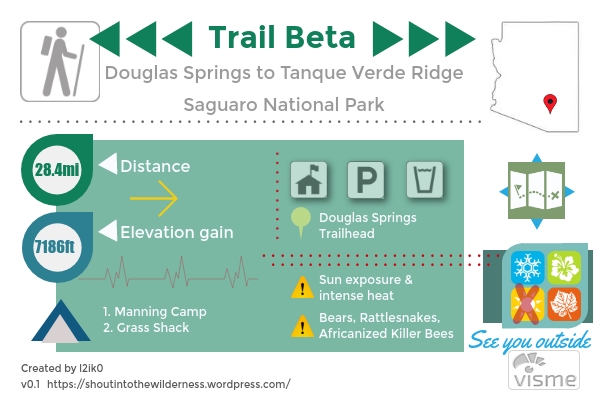
Thoughts
In retrospect, I hadn’t thought this trip through very well. I had picked Saguaro national park as are next destination because we could also visit some family in Tucson. The idea of the alien looking landscape was all very appealing while planning the logistics. I queried people on /r/Tucson for recommended hikes in the park as well as read up on the respective Backpacker Magazine article. That is how I settled on a backcountry loop starting from Douglas Springs, staying over in Manning Camp and Grass Shack, and finishing on the highly touted Tanque Verde Ridge. (I might’ve made up the term backcountry loop. Is that a thing? I wasn’t sure what else described the kind of route we did). What I didn’t look at very closely was the amount of elevation gain and where the campgrounds were situated. We missed out on some pretty epic desert sunsets.
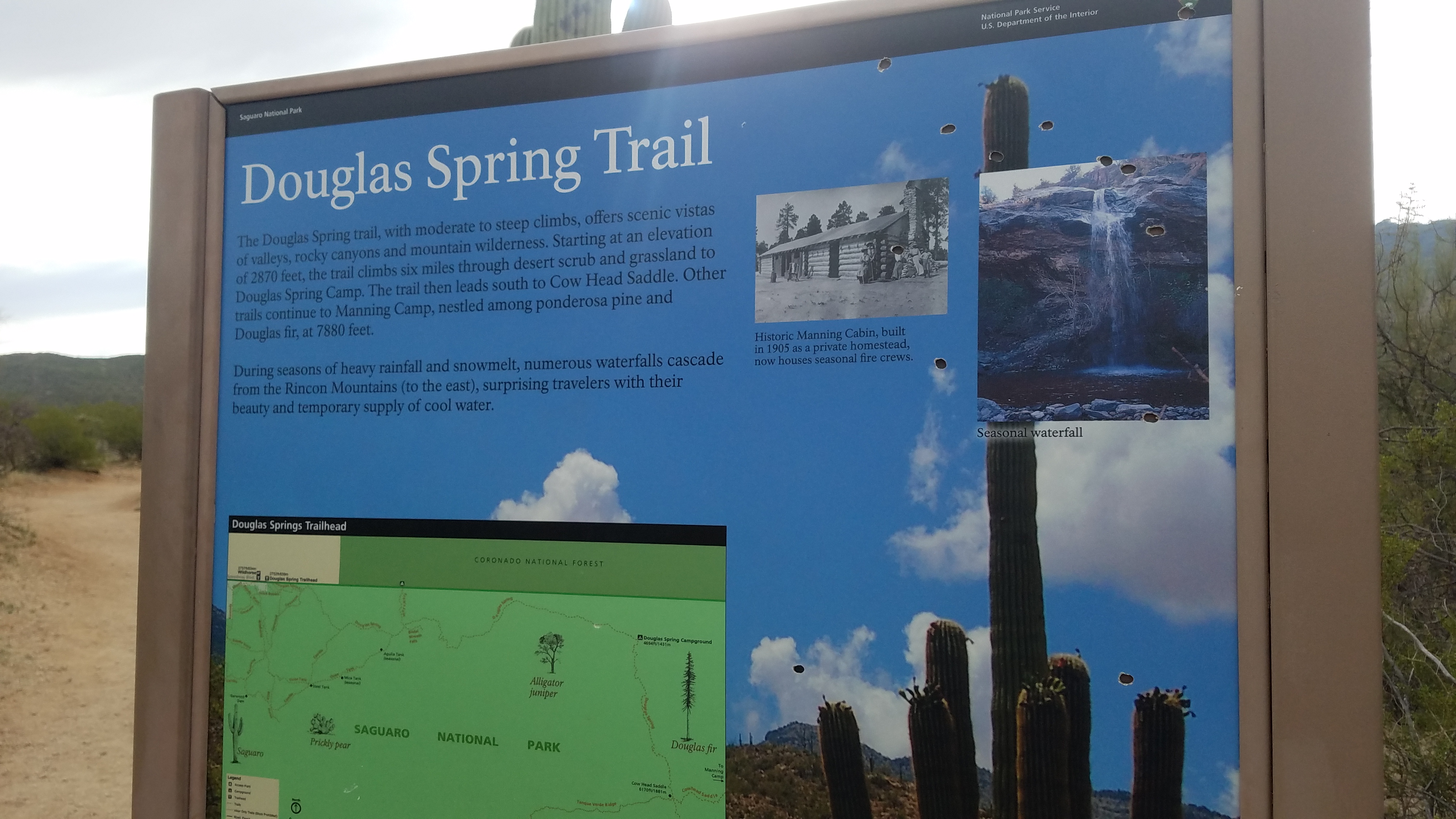
Day 1 of this hike started out reasonably alright. We started early to try and gain elevation before the afternoon heat. The first few miles rambles upwards through fields of saguaro, cholla, ocotillo and other desert flora. We had come at a good time as the ocotillo was in bloom as well as some other plants.
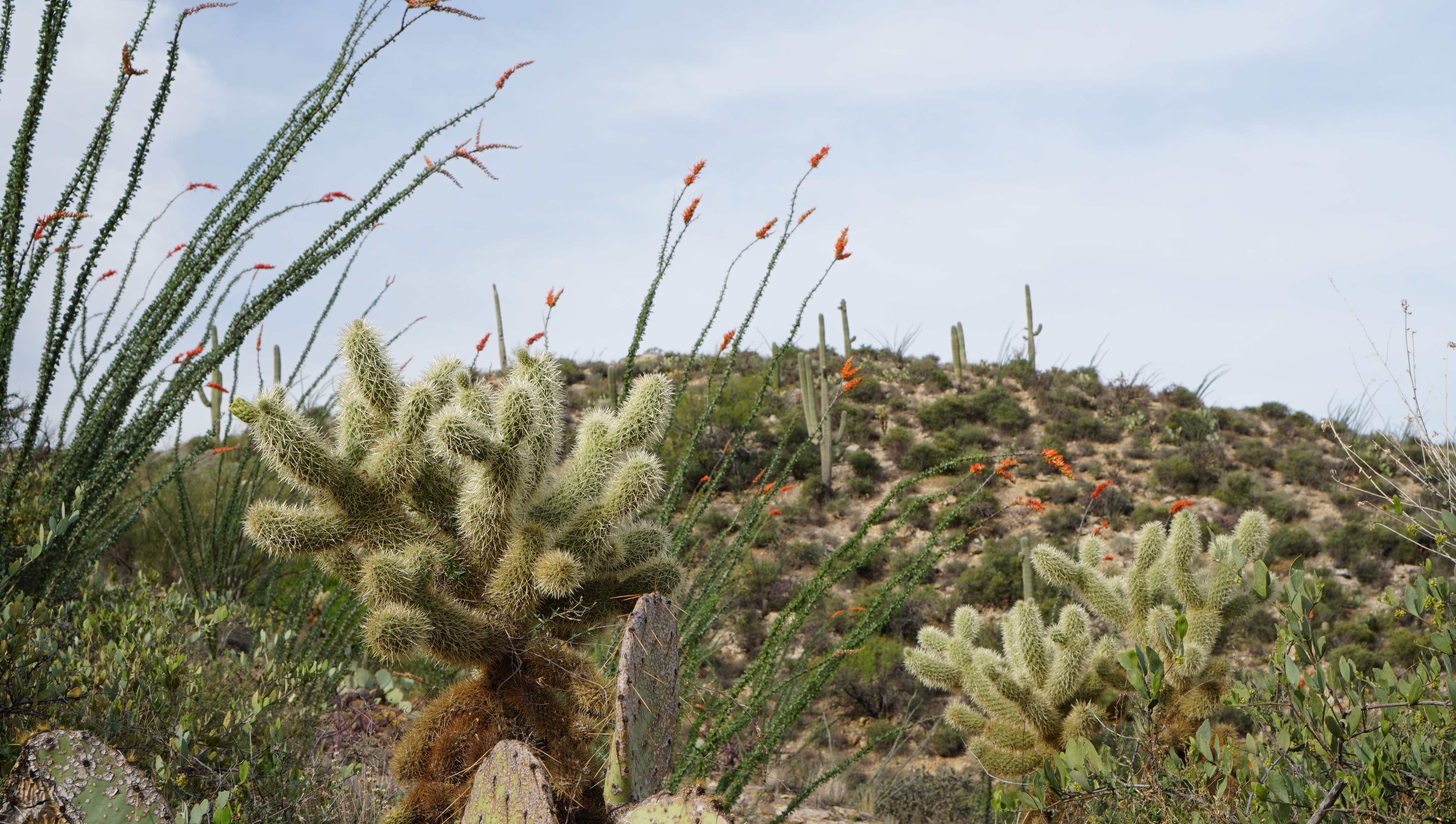
As we climbed higher, the saguaro began to thin out. Long dry grass replaced the various cacti. There were more trees here but it was hard to tell whether they were alive or not. I referred to this is the “grassy dead tree zone” for the remainder of the trip. I’ll be honest, it wasn’t quite as interesting as I had hoped. We left the cactus zone far too quickly and this new biome seemed to drag on forever.
The first major difference in desert hiking and hiking in the Sierra’s is the constant sun exposure. You don’t realize how draining that is until its 12:30 and you’re scrambling for the tiniest patch of shade behind a bush to eat lunch. We felt beat and we were only 6 miles in at Douglas Springs. The spring was pretty low and wasn’t flowing much so we opted not to refill any of our containers. We had packed enough water to last us the full day. After lunch we continued our drudge up the mountain. Grass fell way to an abundance of manzanita. Dead trees were replaced with live ones and the temperature evened out around 80 with a nice breeze. At least in this zone there was some shade from the heat. We topped out at Cow Head Saddle, an intersection point we would hike through on the third day. Yet more elevation gain awaited us as we turned toward the east and continued up the mountain. The ranger at the permit office told us it was 12 miles from Douglas Springs to Manning Camp. My GPS track begs to differ as we clocked in at 8pm and 13.5 miles. Day 1 was rough.
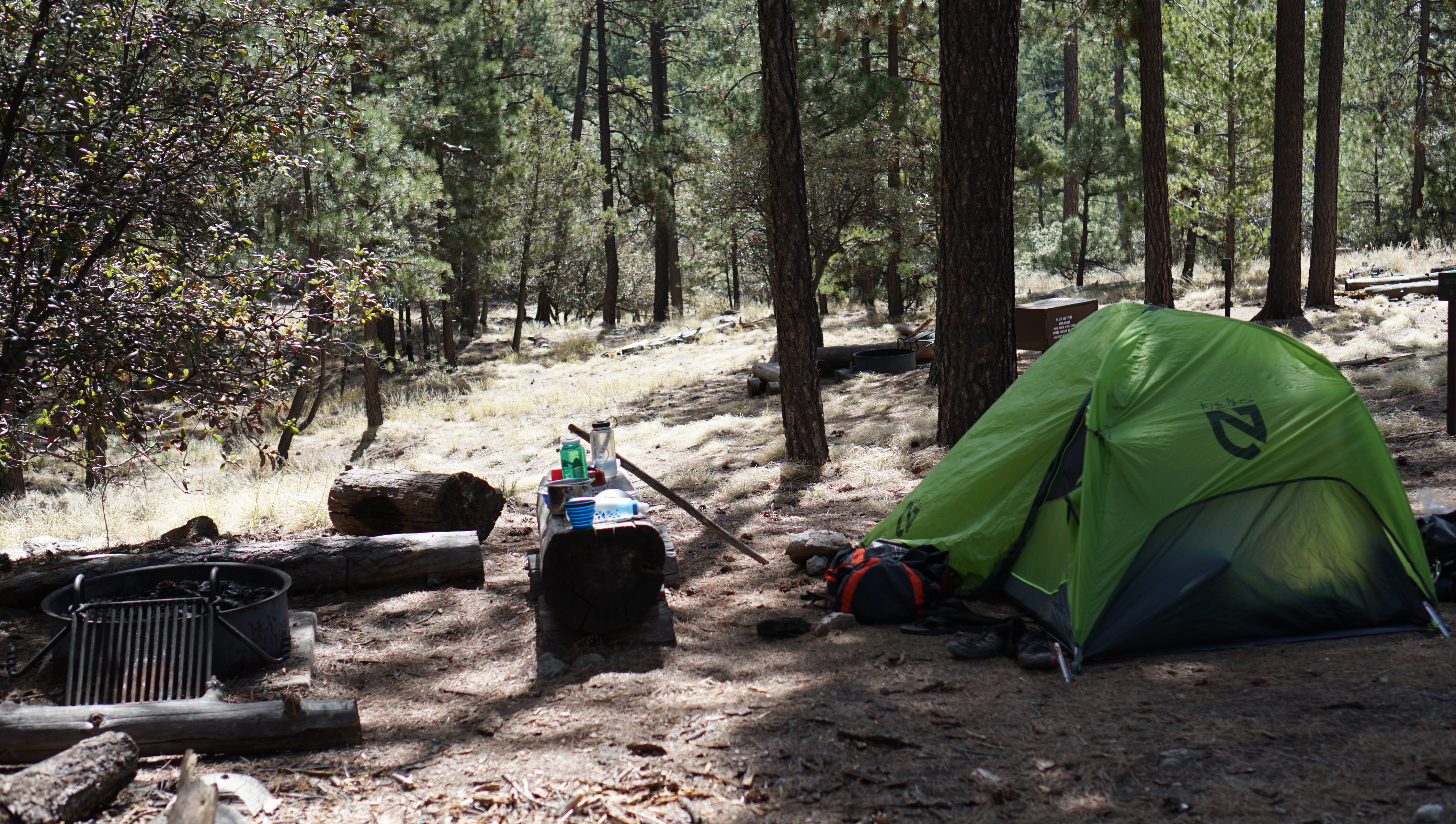
Day 2 was a planned short day. From Manning Camp to Grass Shack is a short 4.5 miles so we took our time making breakfast, refilling all our water and breaking camp. Manning Camp has established fire pits at each of the 6 campsites where you can burn any downed wood you find on the ground. This raised a few eyebrows when the ranger told us this but became obvious when we made it to 7000ft. The top of the mountain is a massive pine forest. You would never think you were even in Arizona anymore since it felt just like the Sierras. We made a fire to ward off the morning chill and enjoyed our coffee. Temperatures were around the mid 40’s during the night and warmed up to around mid 60s by the early afternoon. Manning Camp has a large natural spring next to it that flows throughout the year. We filled up every reservoir we had not knowing the quality of the spring at the subsequent camp.
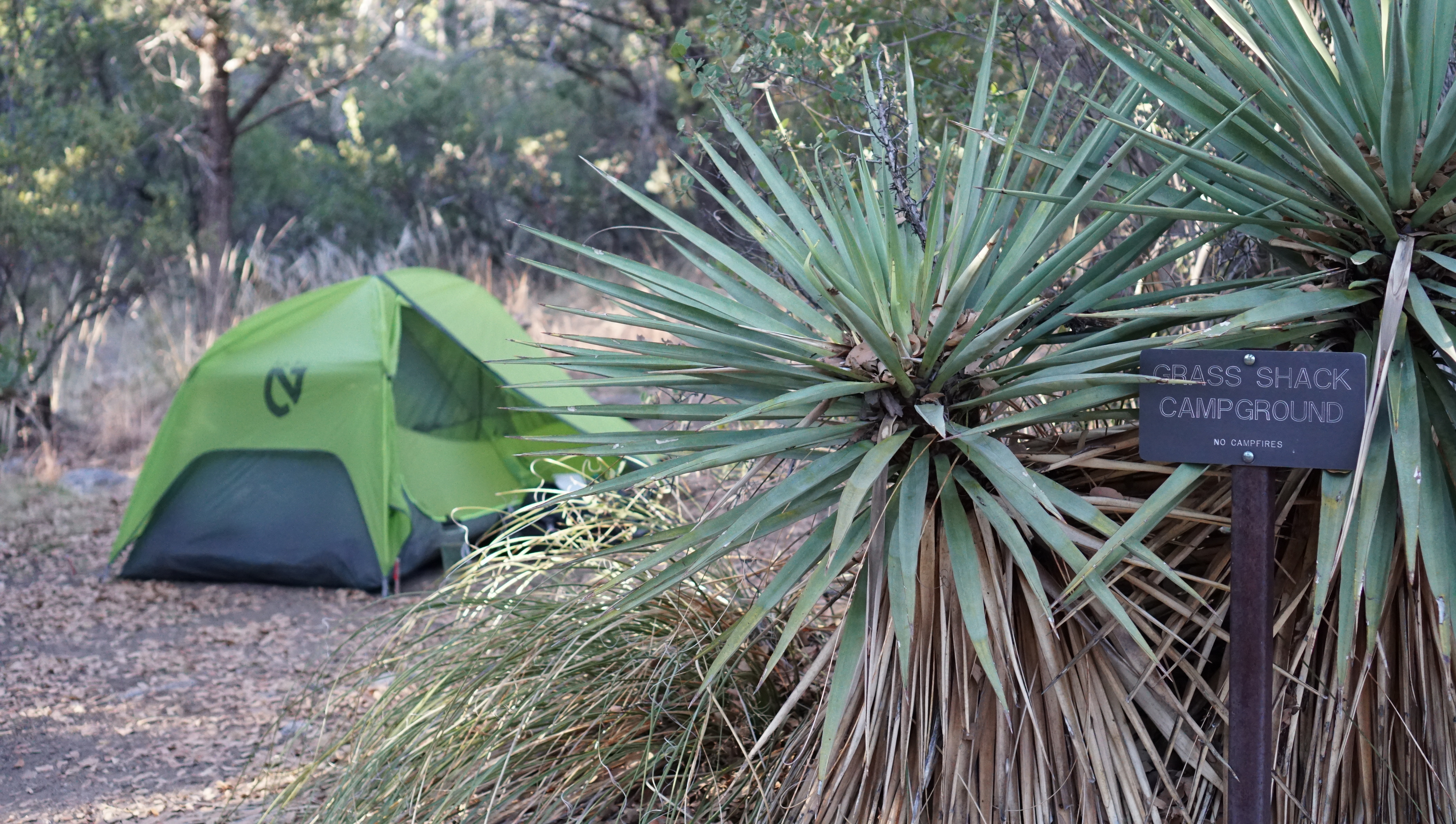
We probably started hiking too late as we hit the trail at the hottest time of the day. Once again exposure was our enemy and made those 4.5 miles drag on forever, despite being mostly downhill. We rolled into Grass Shack camp around 3 and promptly set up camp just so we could relax and do nothing. Grass Shack is situated along a stream that was still trickling in early April. The goal for the rest of the day was just to relax and prepare ourselves for an early start and 13 miles the next day.
Day 3 started at 6:30am. We wanted to be well on our way along the ridge before noon. We were pretty efficient eating breakfast and breaking camp. We left not too long after some other backpackers who were doing the AZT. The initial leg of the day was about 1000ft back up to Cow Head Saddle and then onto the Tanque Verde Ridge trail.
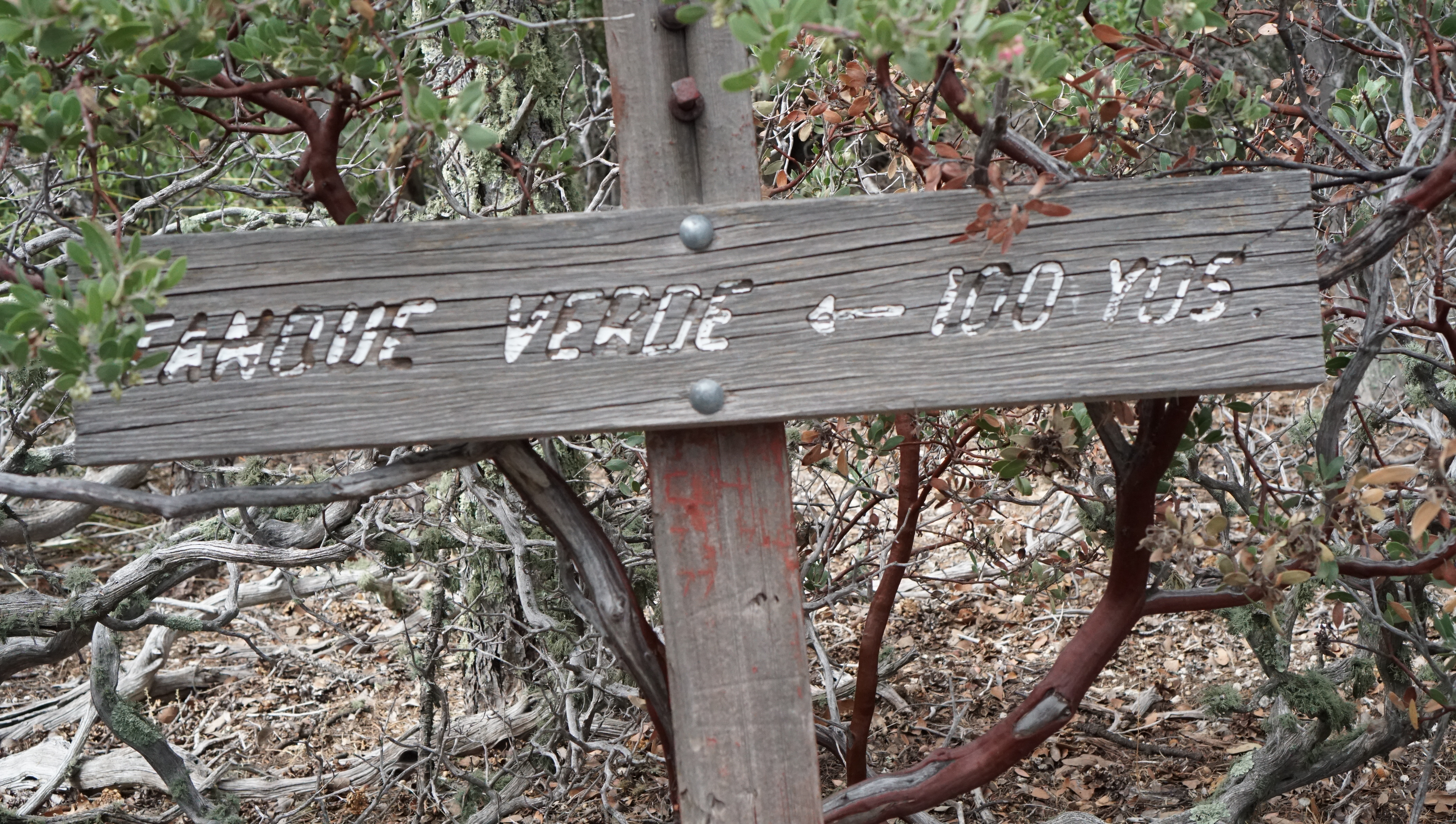
I’ve never backpacked on so much scree and fallen rock as this trail. Parts of it just seemed like you were hiking in a narrow wash. We followed the ridge and took the short side trip to top out on Tanque Verde Peak. The sign said a misleading 100 yards to the peak when in reality it was about 100 ft.
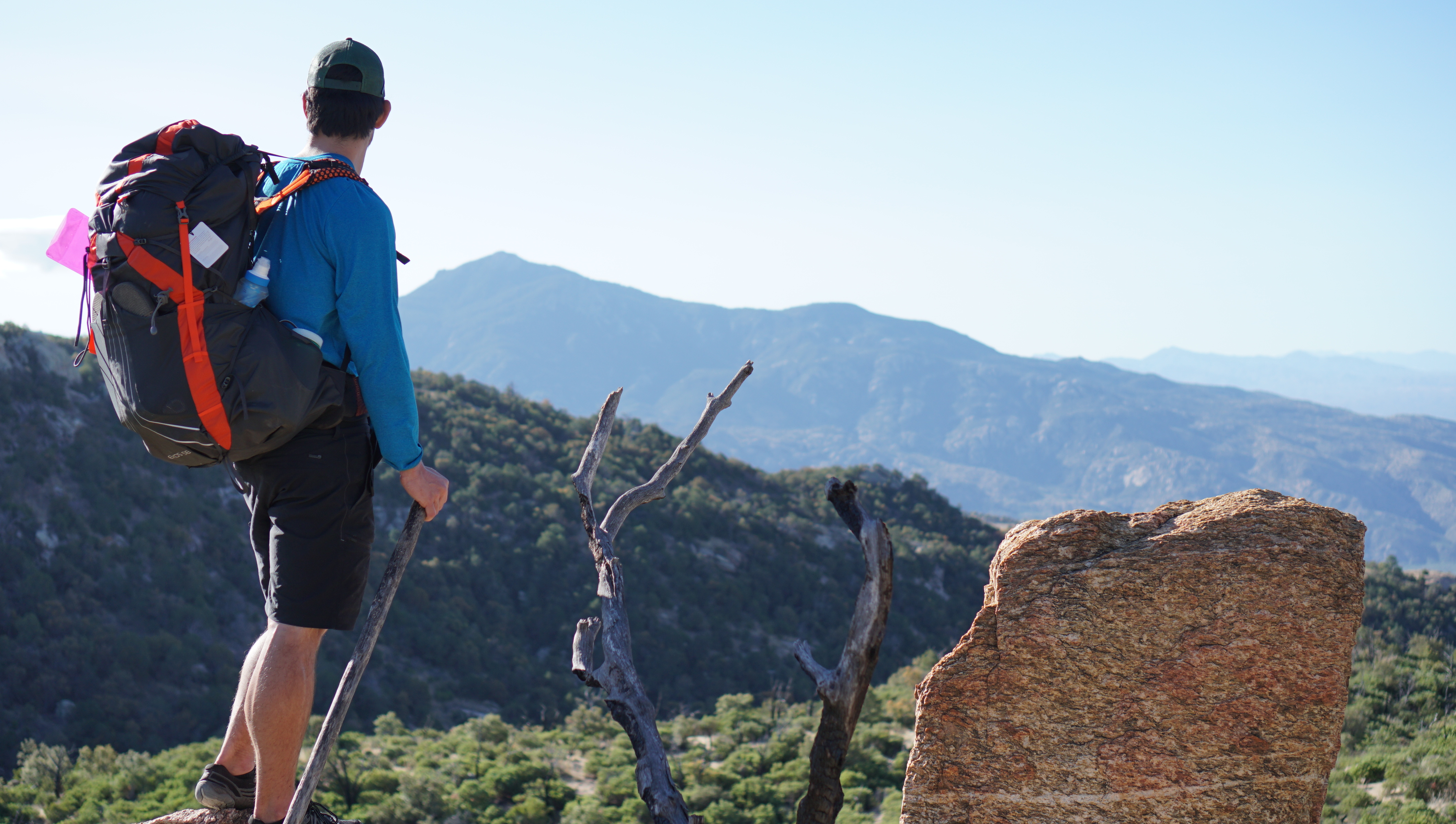
For the first time we were able to have views of the surrounding area. From the ridge-line we could see everywhere we hiked the first and second days as well as out to Tucson and the surrounding island peaks. Hill after hill we descended along the ridge. Through the manzanita zone, way too long through the grass and dead tree zone, and finally back into the saguaro zone. A hot wind picked up in the afternoon as we did the final stint down Tanque Verde Ridge, dodging every sharp and prickly thing along the trail.
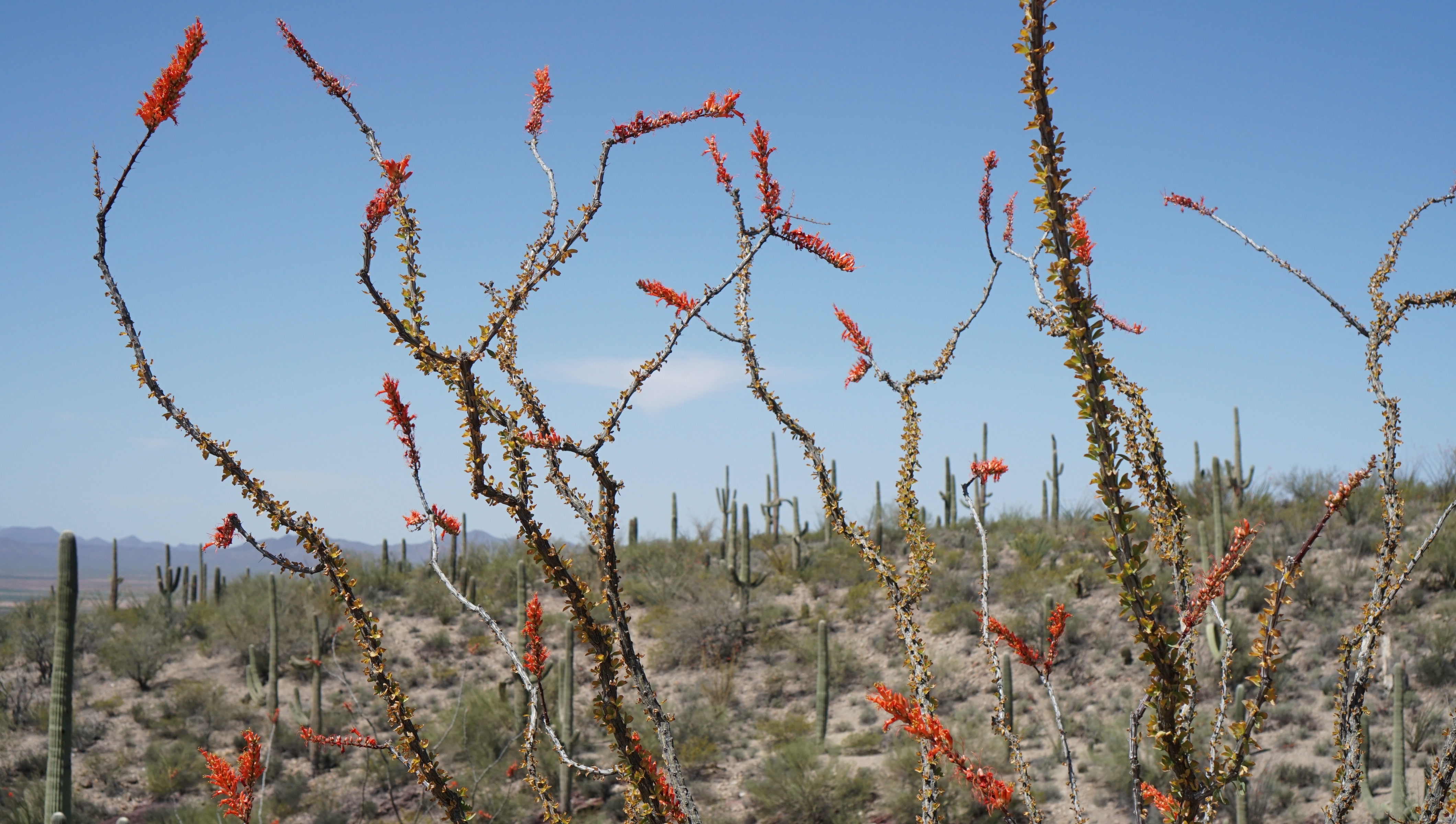
In summary, I’m happy to have gone and had the experience backpacking in a different type of terrain and ecosystem. It makes hiking in the Sierra’s seem like a shade and water-filled dream.

